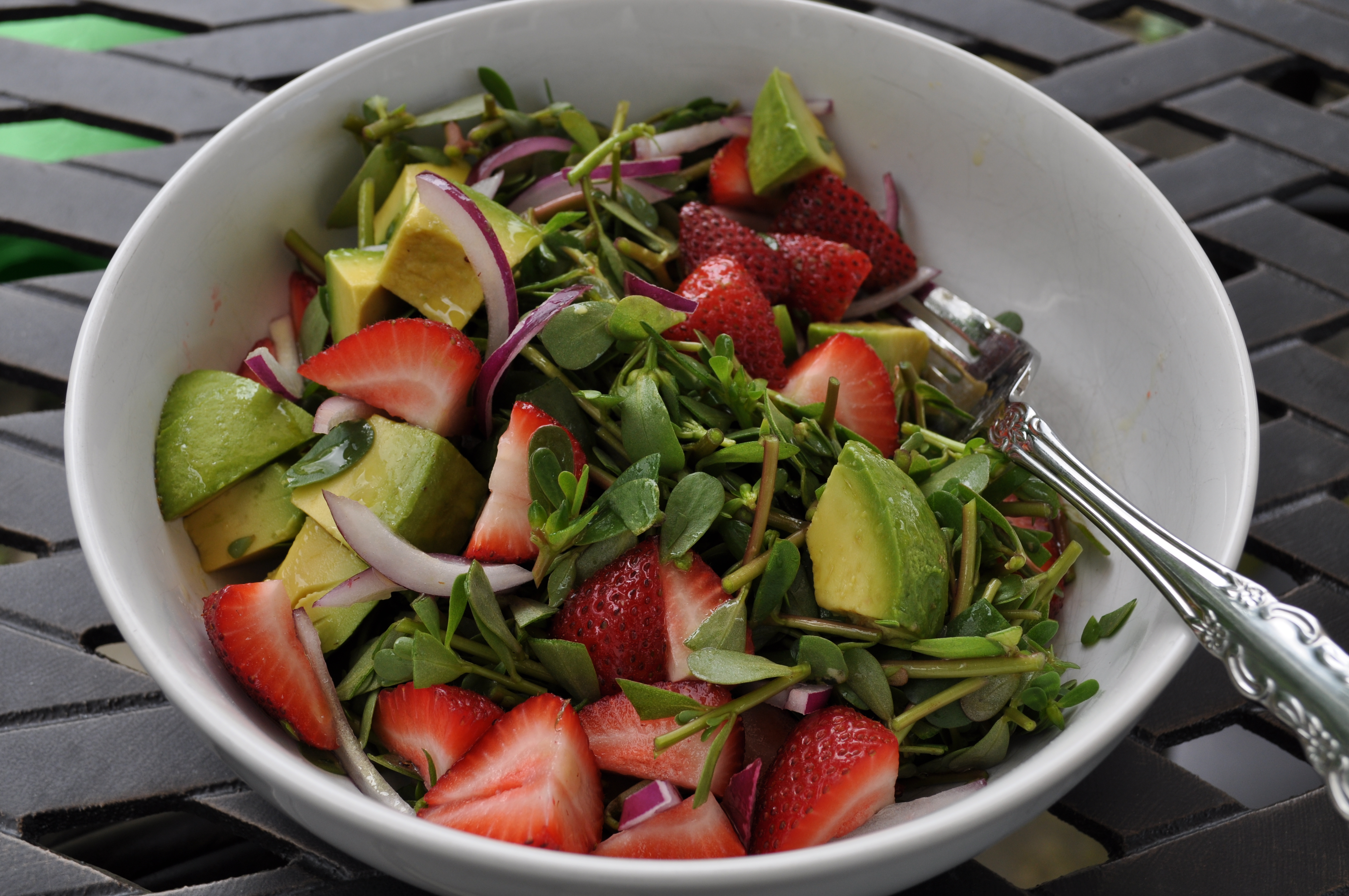 Harvested purslane, roots snapped off, picked and plopped in a bowl
Harvested purslane, roots snapped off, picked and plopped in a bowl
This year we have our largest vegetable garden by far. Thanks to my husband, our family gardener, we have four separate beds that have been planted with nearly a hundred plants including tomatoes, peas, beans, peppers, kale, cucumbers, lettuce, onions, garlic and herbs. Sounds impressive, and it is (an heroic effort!), but it’s also a comedy of errors. As organic gardeners we’ve endured pests a plenty, including cabbage worms, tomato blight, slugs, aphids, and most recently…rabbits. We’ve sprayed our weight in neem oil, sent our toddlers out to chase the rabbits, and even dumped beneficial ladybugs into the garden.
Some of our efforts have been rewarded nicely; our kale looks awesome, we have green tomatoes on several vines, healthy garlic scapes made delicious pesto, and the kids are happily picking snap peas every day. Other areas of the garden are a little depressing…the rabbits continue to eat down the carrot tops and swiss chard into little stumps, our strawberry plants failed to actually fruit, and the beans have had to be replanted. Ah well, you win some you lose some, I guess. We are still learning, after all. Still, it is hard to put so much effort into some of these plants, only to have them fail to make something edible.
On the other hand, there is one edible plant in our garden that took no effort at all. Absolutely none, because it’s a weed – purslane. We didn’t plant it, didn’t plan for it, and yet it’s thriving in its own little patch of garden paradise. It is perfectly immune to the seemingly endless supply of garden pests that we’re constantly beating back. Look how healthy it is!
 Purslane naturally thriving on one end of our garden
Purslane naturally thriving on one end of our garden
Purslane isn’t just edible, it’s a superfood! From Motherearthnews.com:
“Purslane may be a common plant, but it is uncommonly good for you. It tops the list of plants high in vitamin E and an essential omega-3 fatty acid called alpha-linolenic acid (ALA). Purslane provides six times more vitamin E than spinach and seven times more beta carotene than carrots. It’s also rich in vitamin C, magnesium, riboflavin, potassium and phosphorus.”
So perhaps our thriving purslane is the karmic pay-back for all of those other garden plants that didn’t pan out(?). Whatever the cause, now that I’m familiar with purslane I notice it everywhere – even in parking lot cracks! It’s one of the most common American weeds, and it most of the time people go out of their way to get rid of it, which is too bad, as it’s better for you than many of the fruits and veggies in your fridge. Imagine lovely spinach growing all over your yard, and then going out of the way to kill it off with pesticides or labor intensive weeding. Oh, the insanity.
So what should you do with it? I prefer to eat purslane raw; it has a pleasant crunch and a lemony flavor that goes well in salads with a sweet vinaigrette. A little extra virgin olive oil, balsamic vinegar, and a touch of honey and you’re in business. Purslane’s root systems aren’t deep, which makes it pretty easy to pull. The leaves and stems are edible, so just snap off the root ends and then chop it up with a knife, or snip into bite-sized pieces with kitchen shears. (Beware: do NOT juice purslane! I tried it once and, as a succulant, the slimy/gloppy result was really gross to try and choke down.)
 Purslane salad with vinaigrette. Isn’t it pretty?
Purslane salad with vinaigrette. Isn’t it pretty?
So hey, if you see this little trooper in your garden, consider letting it grow a little. Save yourself the weeding and in a couple of weeks you’ll have a delicious and free meal!
For more Eat Happy ideas and recipes, like us on Facebook and check out our new book/cookbook, Eat Happy: Transform Your Health with Foods You Love.